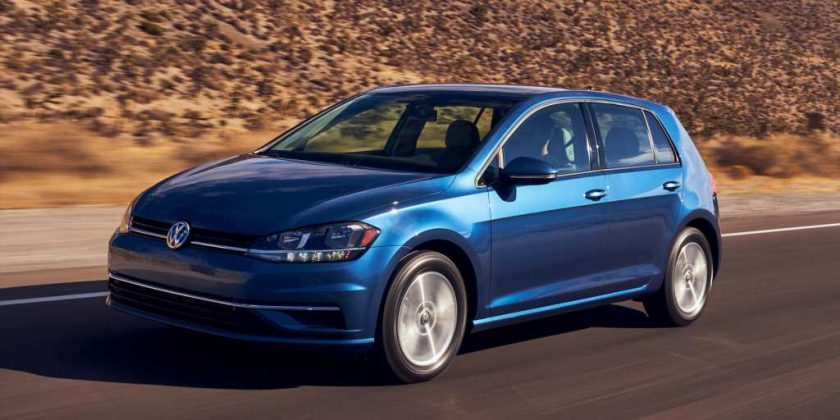We heard rumors back in the spring of 2019, right around the time the Golf SportWagen and Alltrack wagons were discontinued, but now we’ve gotten the official word: The Volkswagen Golf hatchback’s nearly-fifty-year run in the U.S. has come to an end. The Puebla plant cranked out its last North American-bound 2021 Volkswagen Golf last week, and once the supply dries up, that’s it.
This should come as a surprise to absolutely no one. Sales of the Golf (all versions, including the GTI, Golf R, E-Golf and Sportwagen) peaked at nearly 69,000 in 2017—right around the time VW introduced a massive, if temporary, warranty upgrade for several models—but have been steadily declining ever since. In 2020, Volkswagen sold fewer than 22,000 Golfs. For comparison, Honda sold that many Civics each month last year.
The good news is that the new eighth-generation Golf GTI and Golf R are still due to arrive later this year as 2022 models. The new-shape GTI will offer 241 horsepower and the option of a manual transmission, while the Golf R us up 27 horsepower to 315. While previous-gen Golfs all came from Mexico, the 2022 GTI and R will be built in Wolfsburg, Germany. So that’s good news.
Still, we’re mourning the loss of the hum-drum, basic Golf iteration. The seventh-generation car got a heart transplant in 2019, adopting the 1.4 liter turbocharged four-cylinder engine and eight-speed automatic from the Jetta. (A six-speed manual transmission remained standard!) We really liked the 1.4 liter Golf—its performance figures weren’t spectacular, but the Golf was one of those cars that defied the numbers, and it was good fun to toss around. Inexpensive, too, at least in the base models.
The Golf first came to America in late 1974 as the 1975 Rabbit. landing on our shores just as gas prices were skyrocketing. Despite reliability issues—a stark contrast to the bulletproof air-cooled Beetle—the Rabbit was an immediate hit, so much so that Volkswagen purchased an unfinished Chrysler plant in Westmoreland, PA. When it opened in April 1978, Volkswagen was the first foreign automaker to build cars in the US since Rolls-Royce closed their Massachusetts factory in 1931.
The Westmoreland-built Golfs were a bit too Americanized for some people’s taste, with their square headlights and color-coordinated interiors, but they sold strongly despite a myriad of quality problems. The GTI came to the US in 1983, and the Rabbit took its European name, Golf, when the second-generation version arrived for the 1985 model year. (The fifth-generation cars briefly reverted to the Rabbit name for the fifth generation.) Sales were rarely very strong due to Americans’ preference for sedans—the Jetta always sold better—but still the Golf soldiered on.
History tells us a new-generation Golf would likely bring about a sales spike, but with automakers preferring higher-profit SUVs and Volkswagen’s desire to produce electric vehicles for the U.S. , the Golf has finally come to a sand trap it just can’t be chipped out of. We aren’t surprised at the Golf’s demise, but oh, how we’re going to miss it.
Source: Read Full Article
